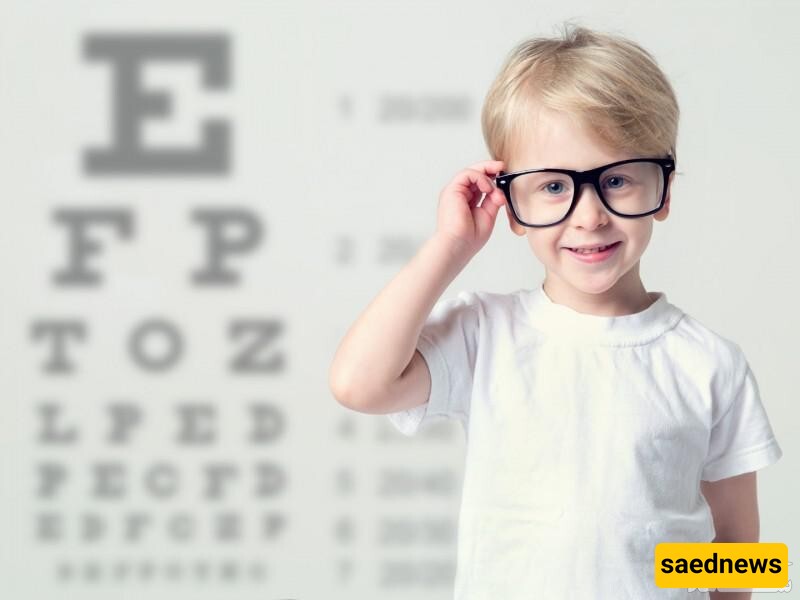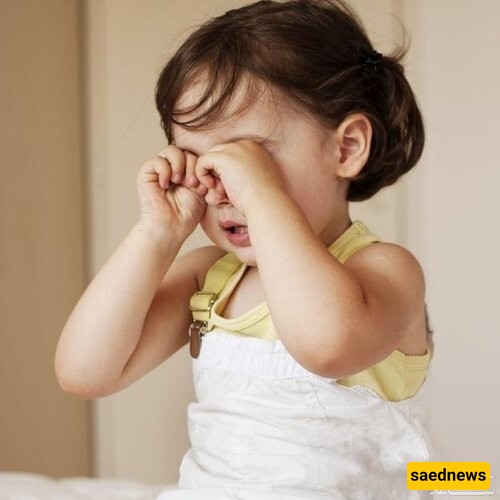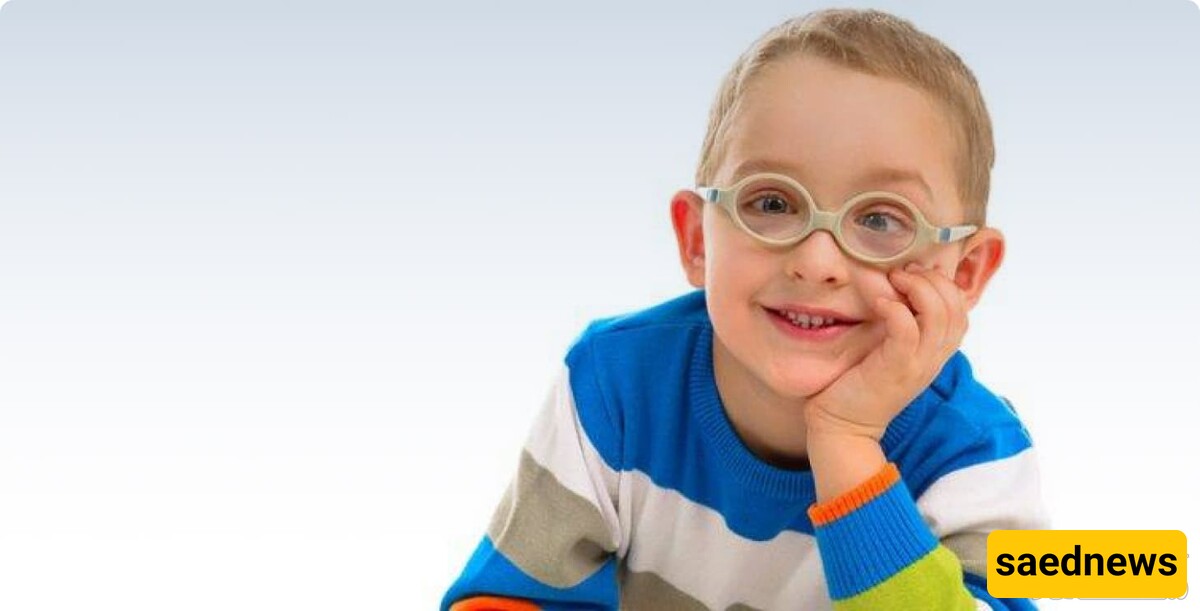Eye examinations by a doctor are an important way to identify your child's vision problems. Issues detected early have a better chance of successful treatment. In this article, we will discuss warning signs of vision problems in children.

Infants over 3 months old should be able to track moving objects, such as a toy or a ball, within their field of vision. If your child cannot maintain consistent eye contact at this age or appears unable to see, inform their doctor.
Before 4 months of age, eye misalignment (strabismus) is common in most infants. However, if after 4 months the eyes frequently turn inward or outward, it is usually abnormal. If you notice this, notify your child's doctor.
Identifying vision problems in infants under one year requires careful observation. For older children, parents play a crucial role in early detection and diagnosis.

Children often do not realize they have a vision problem, so parents must stay alert for potential warning signs. The following signs may indicate the need to consult a doctor:
Holding books or objects very close to their face while reading.
Squinting or excessive blinking.
Tilting their head to see better, such as when looking at a picture or the television.
Rubbing their eyes frequently when not sleepy.
Closing one eye to see better, such as while reading a book.
Difficulty seeing small objects from a distance or reading the classroom blackboard.
Struggling to track moving objects visually.
Frequent headaches at the end of the day.
Complaining of eye strain.
Increased sensitivity to light.
Rapid, uncontrolled eye movements (side to side or up and down).
Complaints of double vision.
Clumsiness and difficulty coordinating movements.
A drooping eyelid that never fully opens.
A white, grayish, or yellowish cloudy spot in the pupil.
Bulging eyes.
Any changes in the appearance of their eyes.
Difficulty seeing at night or in dim lighting.
One eye appearing larger than the other, or pupils of different sizes.
Inability to distinguish certain colors, such as red from green.
Struggles with identifying potentially hazardous objects like stairs, curbs, and walls.
Avoiding activities that require near vision, such as drawing, coloring, tabletop games, or schoolwork.
Avoiding activities that require distance vision, such as watching birds, airplanes, or playing catch.
Eyes that appear misaligned or uncoordinated.
Persistent eye redness that does not fade after a few days, sometimes accompanied by pain or light sensitivity.
An unusual or fixed bright spot in the eye when photographed with a flash (e.g., instead of the typical red-eye effect, a white spot appears in the child's eye).
If you notice any signs of a blocked tear duct, eye injury, or infection such as conjunctivitis (pink eye), your child's doctor should examine their eyes. Symptoms of these issues include excessive tearing, redness, pain, light sensitivity, or discharge in the eyes. Additionally, if your child complains of itching or discomfort in their eyes, inform the doctor, as this may indicate allergies.

A doctor may examine the child’s eyes, test their vision, or refer them to an eye specialist. If there is a family history of vision problems, be sure to inform the doctor.
The eyelid plays a role in maintaining clear vision. If ptosis is severe, it can block vision. If the drooping is minor, the child may need surgery to correct their vision.
Amblyopia is a condition where one eye has weaker vision, often due to untreated refractive errors, strabismus (misalignment), drooping eyelids, or cataracts. If left untreated, amblyopia can lead to permanent vision loss. Corrective lenses prescribed by an eye specialist can help manage refractive errors.
Approximately 4% of children develop strabismus, where one eye looks straight while the other turns inward, outward, upward, or downward. This condition requires urgent treatment, as the brain may ignore the misaligned eye to prevent double vision, potentially leading to permanent vision issues.
Nearsightedness (Myopia): Causes difficulty seeing distant objects clearly and affects about 42% of school-aged children. It is hereditary and typically begins in childhood, worsening during teenage years and stabilizing in adulthood. It occurs when the eye focuses images in front of the retina rather than directly on it. Corrective lenses or contact lenses can help.
Farsightedness (Hyperopia): Causes difficulty seeing nearby objects clearly and affects about 13% of children aged 6-17. It occurs when images focus behind the retina instead of directly on it. Hyperopia is also hereditary and can result from pregnancy complications, early childhood illness, or eye trauma. It can usually be corrected with glasses or contact lenses.
Cataracts cause the eye's normally clear lens to become cloudy. While common in older adults, some children are born with cataracts or develop them due to injury. Cataracts in children are typically treated with surgery.
Cellulitis is an infection of the eyelid or eye socket that causes fever, pain, swelling, bulging eyes, and blurred vision. The infection can spread rapidly, so immediate medical attention is necessary.
Conjunctivitis is one of the most common eye infections and results from bacterial, viral, or allergic inflammation of the eye's white area. Symptoms include redness, itchiness, tearing, and sticky discharge. The condition is recognizable by swollen, pinkish eyes. Mild cases may be managed at home, but severe infections require a doctor’s examination and possibly antibiotic eye drops.
Recognizing these signs early and seeking medical attention promptly can help protect your child's vision and overall eye health.

